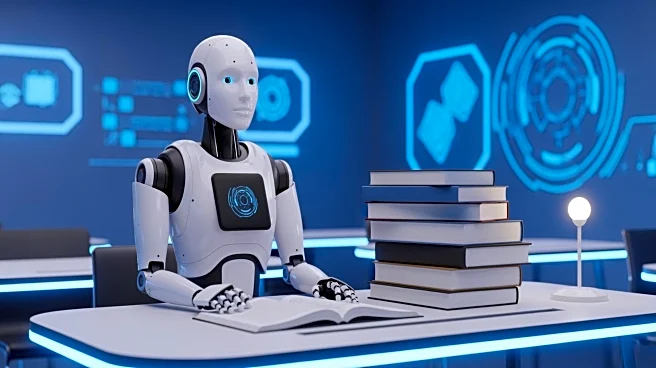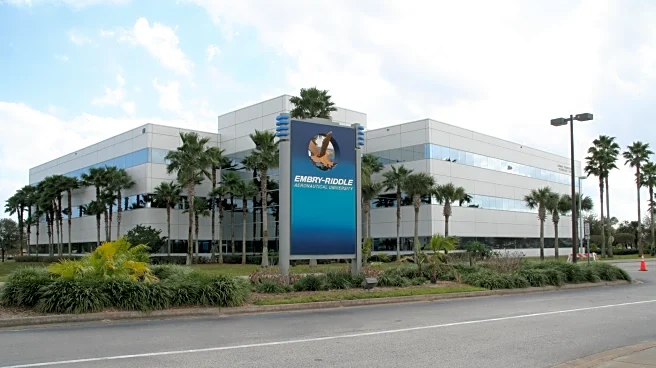What's Happening?
OpenMind, in collaboration with Robostore, has introduced the first comprehensive university curriculum for humanoid robots. This initiative is built on OpenMind's OM1 platform and is tailored for the Unitree
G1 humanoid robot. The curriculum aims to provide students, researchers, and educators with a complete educational pathway in humanoid robotics, covering aspects such as motion, perception, coordination, and interaction. The program is designed to move beyond theoretical papers and simulations, offering hands-on experience with real hardware. This development addresses the growing demand for standardized academic paths in robotics education, as evidenced by Robostore's support for over 100 leading institutions, including Harvard, MIT, and Stanford.
Why It's Important?
The launch of this curriculum is significant as it addresses a critical gap in robotics education, providing a standardized and applied learning path for humanoid robotics. With projections indicating the presence of over one billion humanoids by 2050, the need for practical and scalable education in this field is crucial. This curriculum enables universities to quickly implement high-impact courses and labs, fostering innovation and expertise in humanoid robotics. The collaboration between OpenMind and Robostore brings together advanced hardware and educational resources, potentially accelerating the development and deployment of humanoid robots in various sectors.
What's Next?
The curriculum will be available through Robostore and in partnership with academic institutions and research labs starting later this month. Interested programs can contact OpenMind or Robostore to discuss integration and deployment. This initiative is expected to enhance the capabilities of educational institutions in teaching humanoid robotics, potentially leading to increased research and development in the field.
Beyond the Headlines
The introduction of a standardized curriculum for humanoid robotics may have long-term implications for the robotics industry, including ethical considerations regarding the deployment and interaction of humanoid robots in society. As educational institutions adopt this curriculum, there may be increased discourse on the societal impact and ethical use of humanoid robots.












